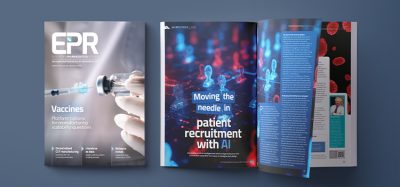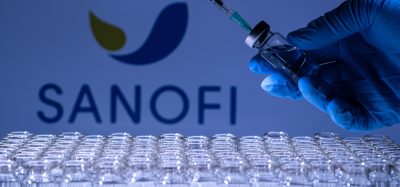Genotoxic impurities in pharmaceutical products
Posted: 20 December 2019 | Dr Sol Bobst (ToxSci Advisors LLC), Gowri Sukumar (Iterion Therapeutics) | No comments yet
Several organisations have developed guidelines that specifically address genotoxic impurities in pharmaceutical products. Here, Dr Sol Bobst and Gowri Sukumar discuss the regulatory landscape, testing requirements and calculation methods for occupational exposure limits.


Introduction
The recall of Valsartan containing NDMA by several companies in 2018 has refocused interest in the regulatory and testing requirements for genotoxic impurities in pharmaceutical products.1 This includes occupational and consumer safety protection. Over the past decade, industry standards and best practices have been developed in order to address the risks posed by impurities and to help regulatory managers manage these risks appropriately. This article provides an overview of the current resources available to quality and safety professionals to safely and effectively manage these risks.
Regulatory landscape
The levels of impurities in drugs must be reduced to acceptable safety limits to protect patients. Additionally, reliable and accurate data measured in pharmaceutical laboratories are key to ensure product safety. Several organisations from industry and regulatory authorities have developed guidelines specifically addressing genotoxic impurities. Per the International Council for Harmonization (ICH) S2 (R1) Guideline, genotoxic impurities can be broadly defined as impurities that have been demonstrated to cause deleterious changes in the genetic material regardless of the mechanism. Presence of genotoxic impurities can be confirmed when tested via an appropriate genotoxicity test model (eg, bacterial gene mutation – Ames).2
The primary concern related to genotoxic impurities stems from synthesis of an active ingredient that might often require the use of reactive raw materials that have the potential to interact with human DNA to cause mutations and cancer, even at the lowest levels. Therefore, genotoxic impurities should be avoided and if not possible, reduced below a defined threshold.
The guidelines for genotoxic impurities broadly address the control of genotoxic impurities, genotoxic testing and risk assessment for genotoxic and carcinogenic substances.


From the US Food and Drug Administration’s (FDA’s) perspective, the draft guidance for industry – Genotoxic and Carcinogenic Impurities in Drug Substances and Products – recommended approaches provide specific recommendations regarding the safety qualification of impurities with known and suspected carcinogenic potential.5 This also covers the methods to characterise and reduce the potential cancer risk with patient exposure to genotoxic impurities.
Developing analytical procedures for genotoxic impurities can be challenging since the procedure should allow detection limits in the range of 1 to 5ppm”
The overview of the ICH M7 guideline on the assessment and control of DNA reactive (mutagenic) impurities helped resolve inconsistencies between the FDA and EMA guidelines and helped clarify other questions discussed in the industry. Overall, the ICH guideline offers the key advantage of wider geographic scope than the currently available FDA and EMA guidelines.6 The global guideline for genotoxicity testing for pharmaceutical products – Genotoxicity testing and data interpretation for pharmaceuticals intended for human use – focuses on the internationally agreed upon standards for follow-up testing and interpretation of positive results in vitro and in vivo in the standard genetic toxicology battery, including assessment of nonrelevant findings that are applicable for small molecule drugs only, and not for biologics.
Testing and compliance requirements
The testing requirements are applicable to all phases of development and manufacturing, although a gradual increase in requirements is implemented for phases from pre-clinical studies to finished drug quality control testing. Screening for analytical methods early in development will help make toxicology studies efficient and enable experience to be gained on the method’s performance over time. These, along with robustness and reasonable acceptance criteria, are an important part of method validation during the new drug registration phase. The ICH guideline for validation of analytical procedures is detailed in ICH Q2(R1).7 This outlines the test parameters and acceptance criteria. Particular attention should be given to specific requirements and circumstances when validating methods used for analysis of genotoxic impurities.
Genotoxic impurities should be avoided and if not possible, reduced below a defined threshold”
Developing analytical procedures for genotoxic impurities can be challenging since the procedure should allow detection limits in the range of 1 to 5ppm. This not only demands highly sensitive analytical instruments but also selectivity due to the presence of a higher number of other organic compounds that may be present in low concentrations. Moreover, a single analytical procedure may not suffice to analyse all genotoxic impurities due to the varied functional groups as well as their different sources. Therefore, a combination of analytical techniques may have to be selected. High-performance liquid chromatography (HPLC) with UV/Vis detectors and gas chromatography (with FID detectors) were some of the frequently-used techniques for analysis of these impurities previously. More recently, mass spectrometers are being increasingly used as detectors for higher sensitivity and selectivity. Consideration must also be given to the handling of these impurities due to their reactive nature, the integrity of the analytes during handling, extraction of the sample and eventual analysis.
Calculating limits for exposure to genotoxic impurities
If genotoxic impurities are identified from assays, it is important to calculate the permissible daily exposure (PDE). In cases where the genotoxic dose cannot be determined, a toxicological threshold of concern can be used. If there is toxicological data that is available with a No Observable Effect Level (NOEL), then a calculation can be performed using the following equation, as referenced in ICHQ3C(R4):8
PDE = (NOEL weight adjustment)/(F1×F2×F3×F4×F5)
Where
- F1 is a factor used to adjust for animal extrapolation to humans, based on allometric scaling
- F2 is a factor to account for variability between individuals
- F3 is a factor used for adjustment in study duration
- F4 is an adjustment factor, depending on the severity of the observed toxic effects
- F5 is a variable factor if the NOEL was not established.
Summary
Several resources are available for regulatory professionals to adequately manage genotoxic impurities in order to comply with international regulations and best practices. In particular, all of the ICH guidelines listed and discussed in this article can be useful for establishing policies, procedures and risk management systems in order to identify and effectively manage genotoxic impurities, so that the manufacturing environment can be addressed if impurities are being detected or produced that can be eliminated through quality or engineering management. The guidelines also serve to provide calculation methods to determine if the presence of a genotoxic impurity is below a toxicological threshold of concern and permissible daily exposure, or if the impurity is at unacceptable levels for occupational and consumer health.
About the authors




References
- https://www.bloomberg.com/news/ features/2019-09-12/how-carcinogen- tainted-generic-drug-valsartan-got-past-the-fda
- ICH S2 (R1), Genotoxicity Testing and Data Interpretation for Pharmaceuticals Intended for Human Use, 2012.
- Muller L, et al. A Rationale for Determining, Testing and Controlling Specific Impurities in Pharmaceuticals that Possess Potential for Genotoxicity. Regulatory Toxicology and Pharmacology, 2006, 44:198–211.
- EMEA, Safety Working Group, Questions and Answers on the Guideline on the Limits of Genotoxic Impurities, EMA, 2008 and 2009 (published as an official document in 2010:21. EMA/CHMP/ SWP/431994/2007 Rev. 3) and 2012 (Published on the EMA website: http://www.ema.europa.eu/ema)
- FDA Draft guidance, Genotoxic and Carcinogenic Impurities in Drug Substances and Products: Recommended approaches, 2008.
- ICH M7: Assessment and Control of DNA Reactive (Mutagenic) Impurities in Pharmaceuticals to Limit Potential Carcinogenic Risk, Business Plan, 2010, Position Paper, 2010.
- ICH Q2 (R1), Validation of Analytical Procedures: Definitions and Methodology, Geneva, 2005, in 2005 incorporated in Q2 (R1).
- International Conference on Harmonisation. Q3C(R4): impurities: guideline for residual solvents. 2009. http://www.ich.org/LOB/ media/MEDIA5254.pdf.
Issue
Related topics
Analytical techniques, Drug Safety, Impurities, Ingredients, QA/QC









